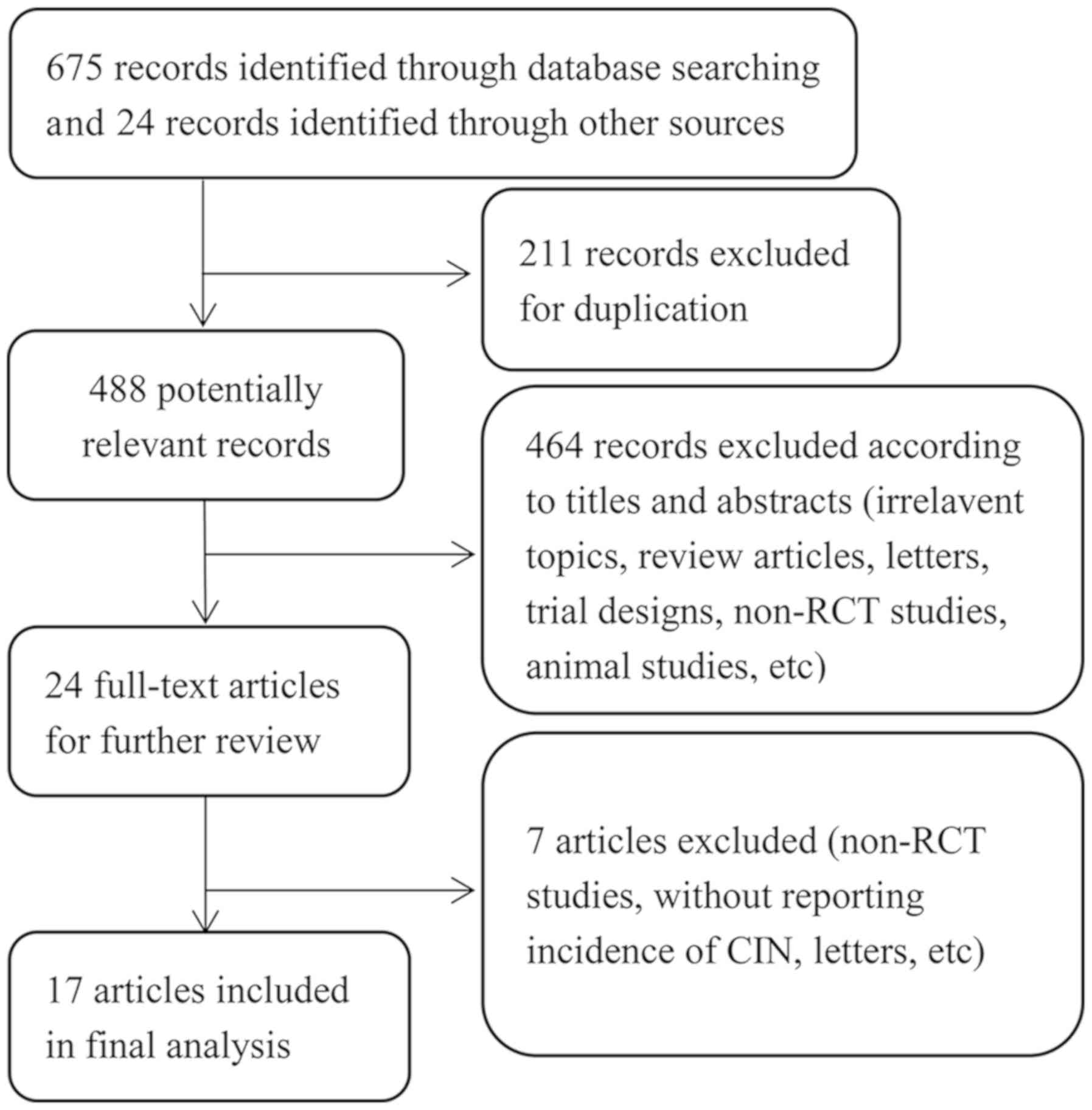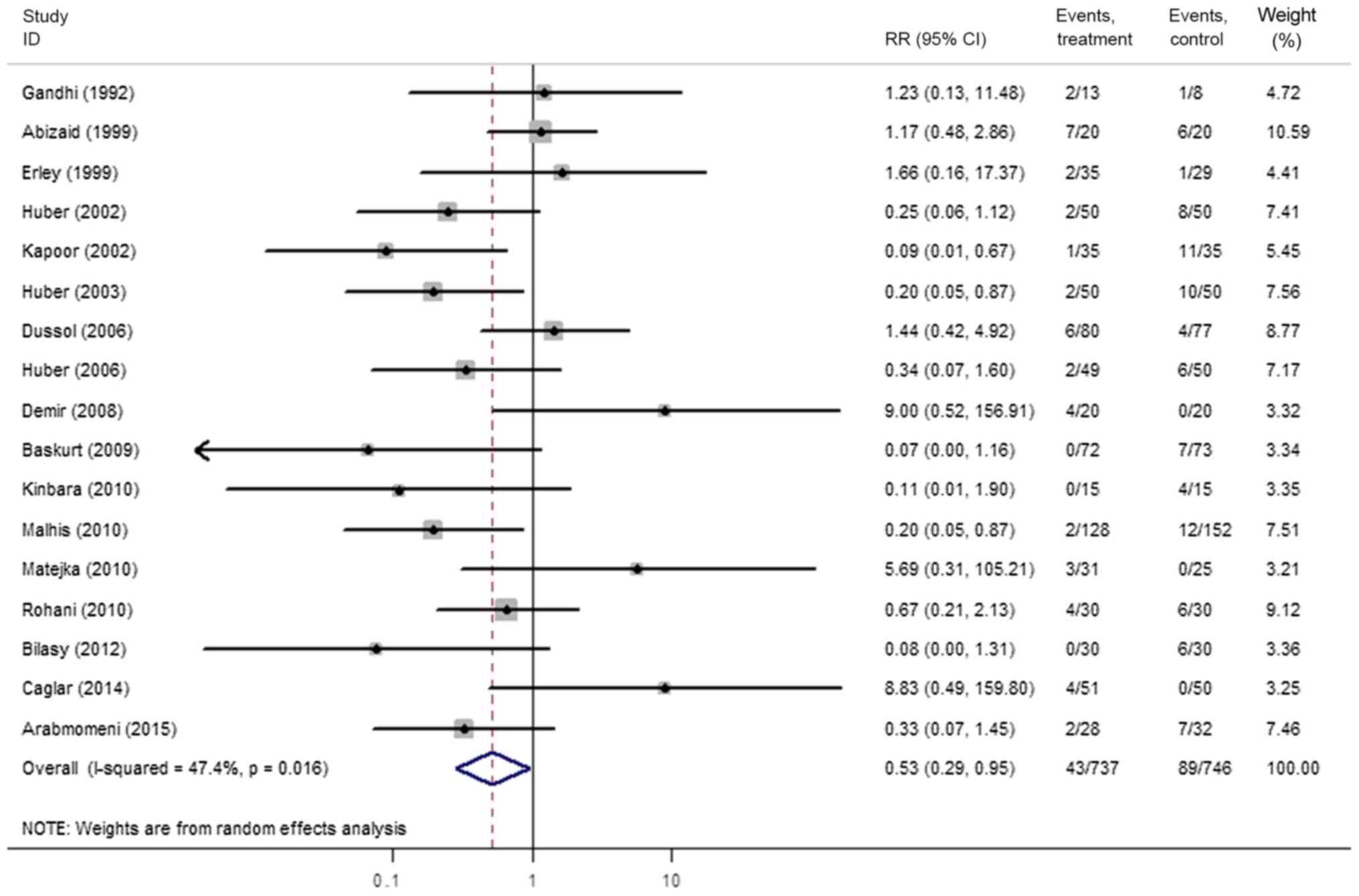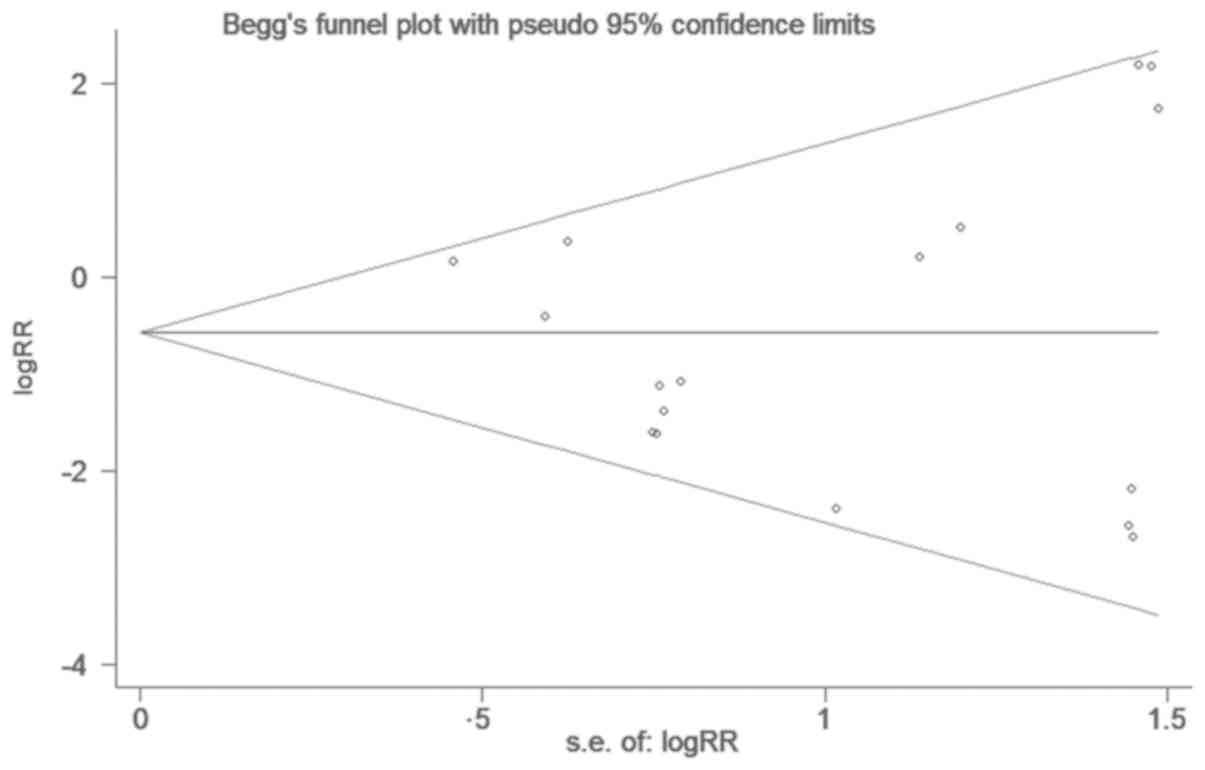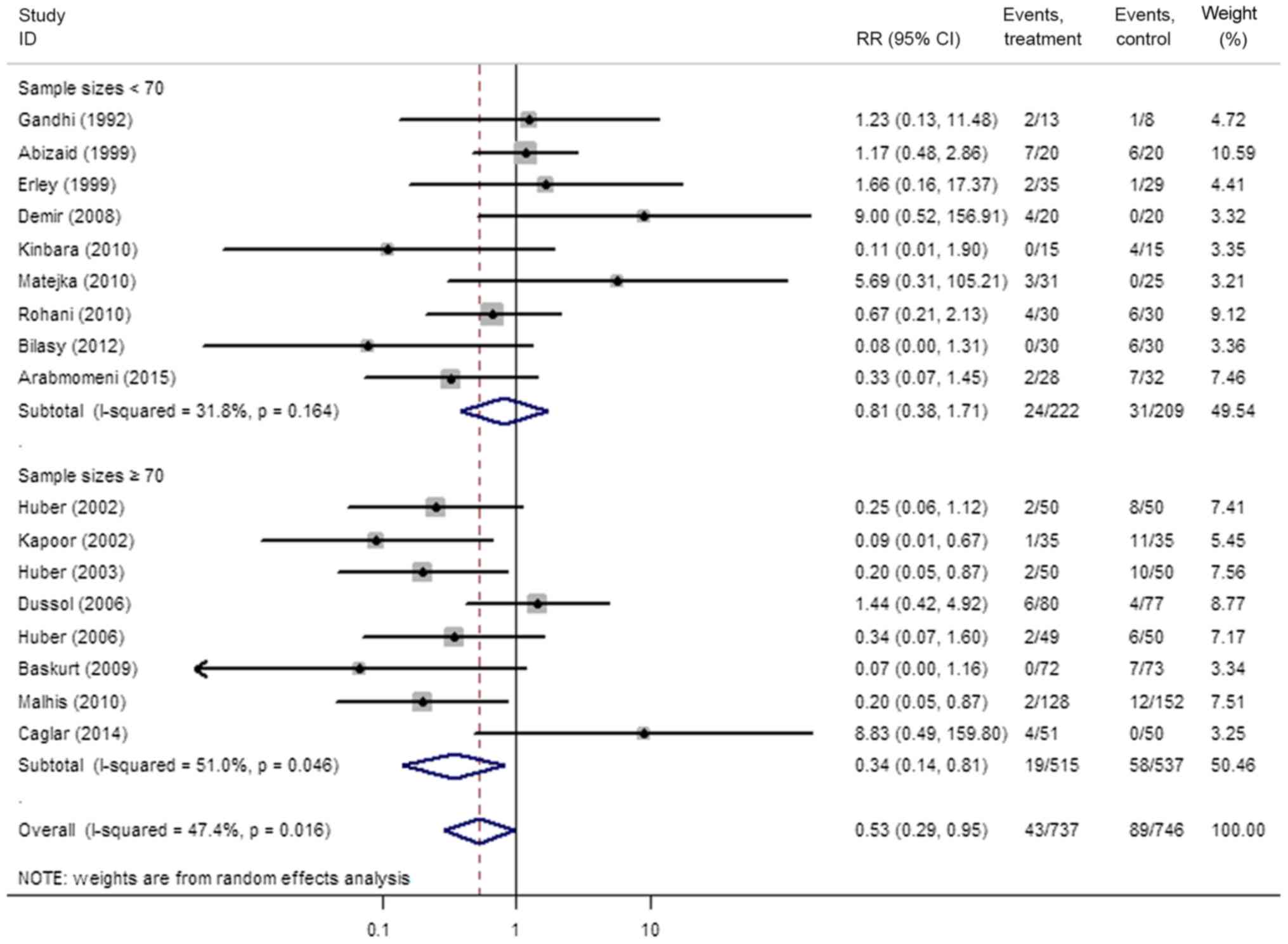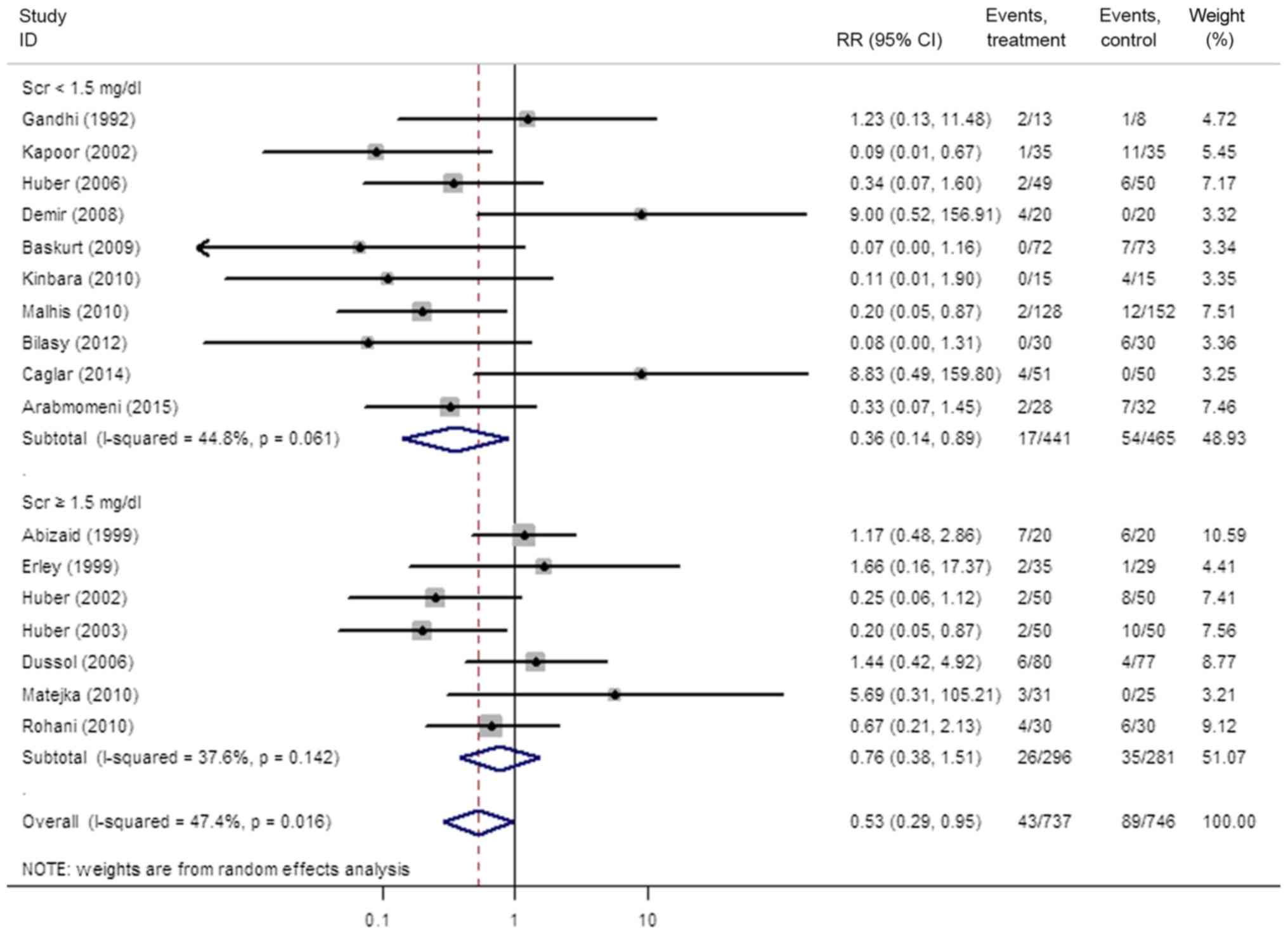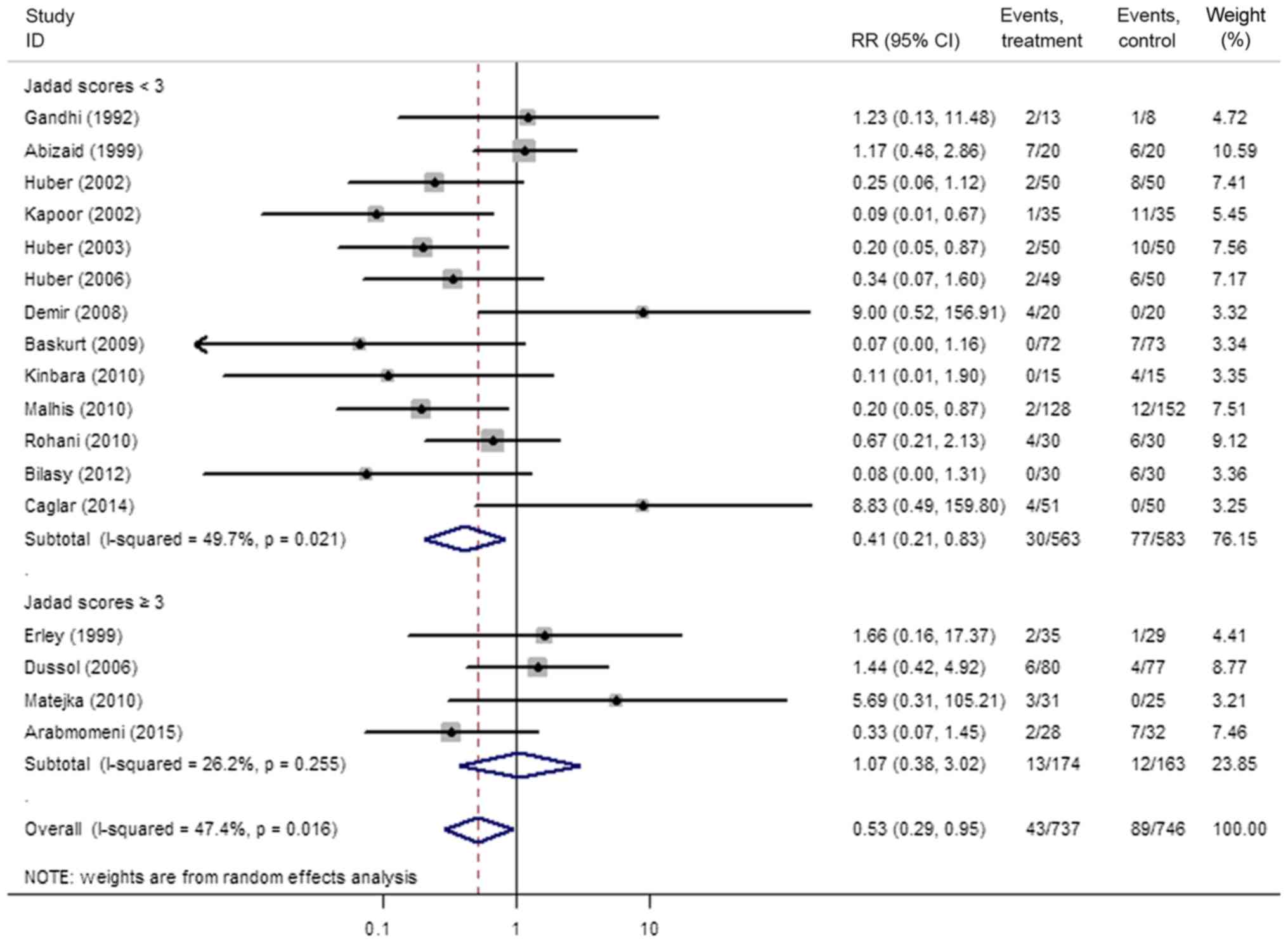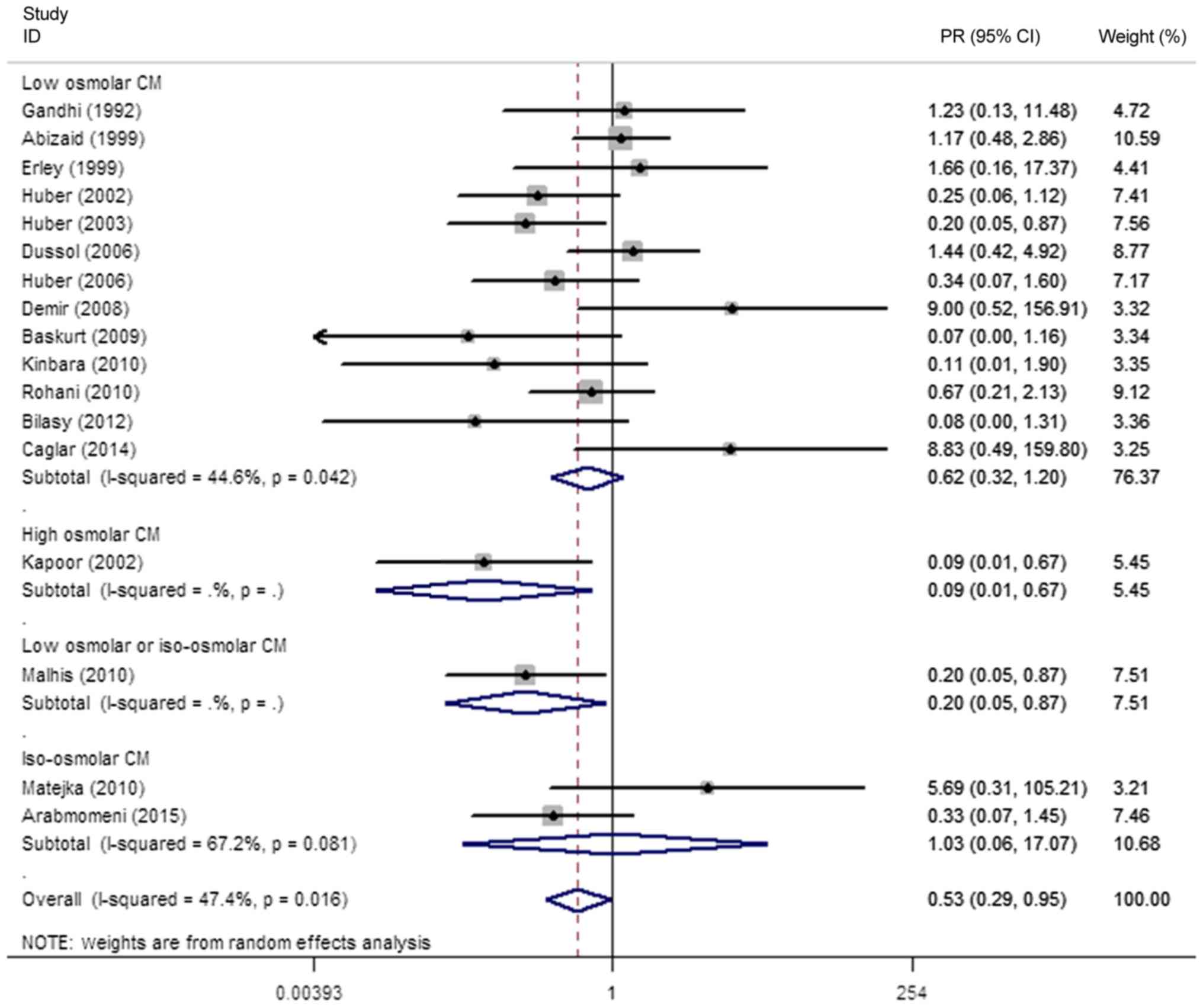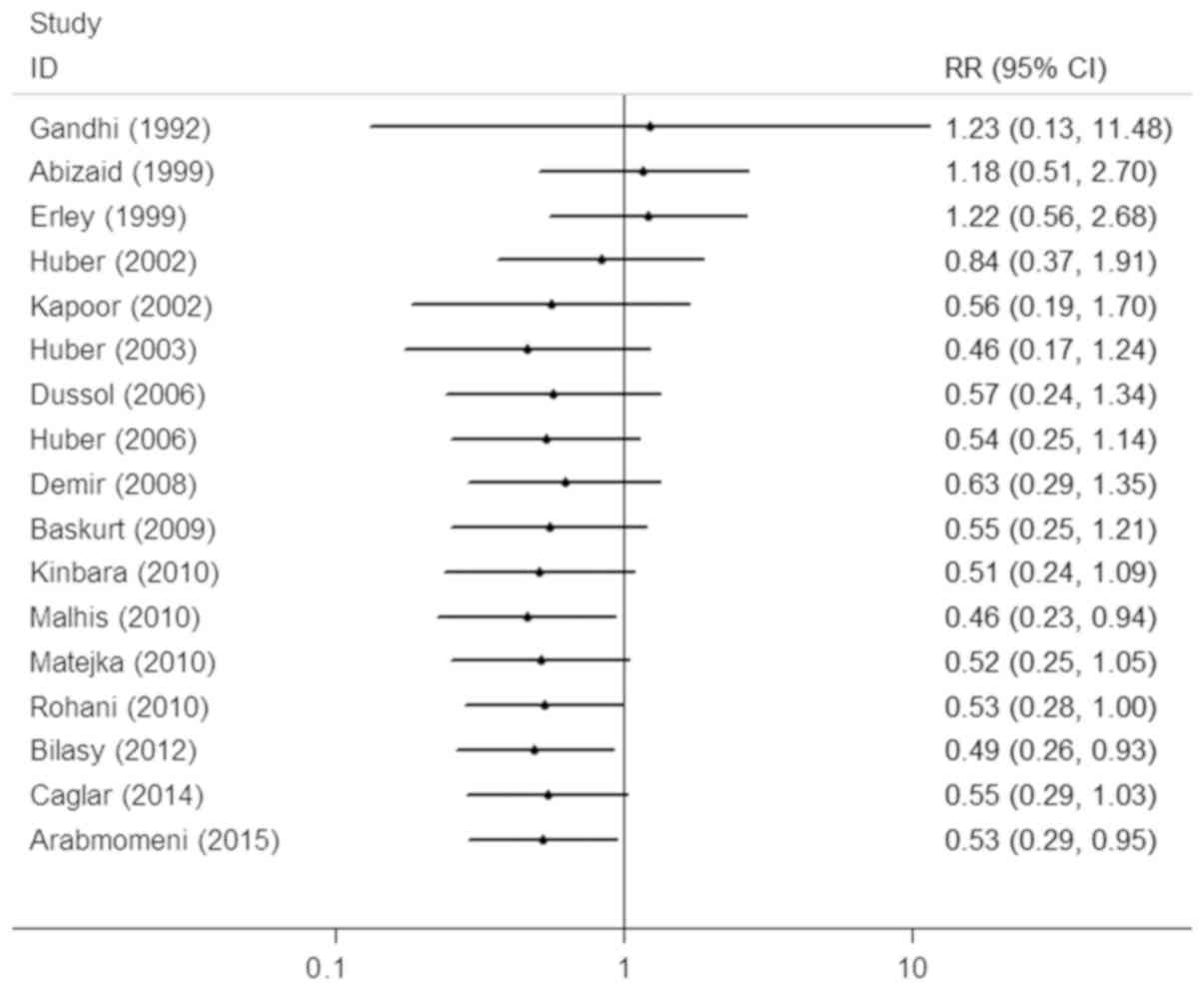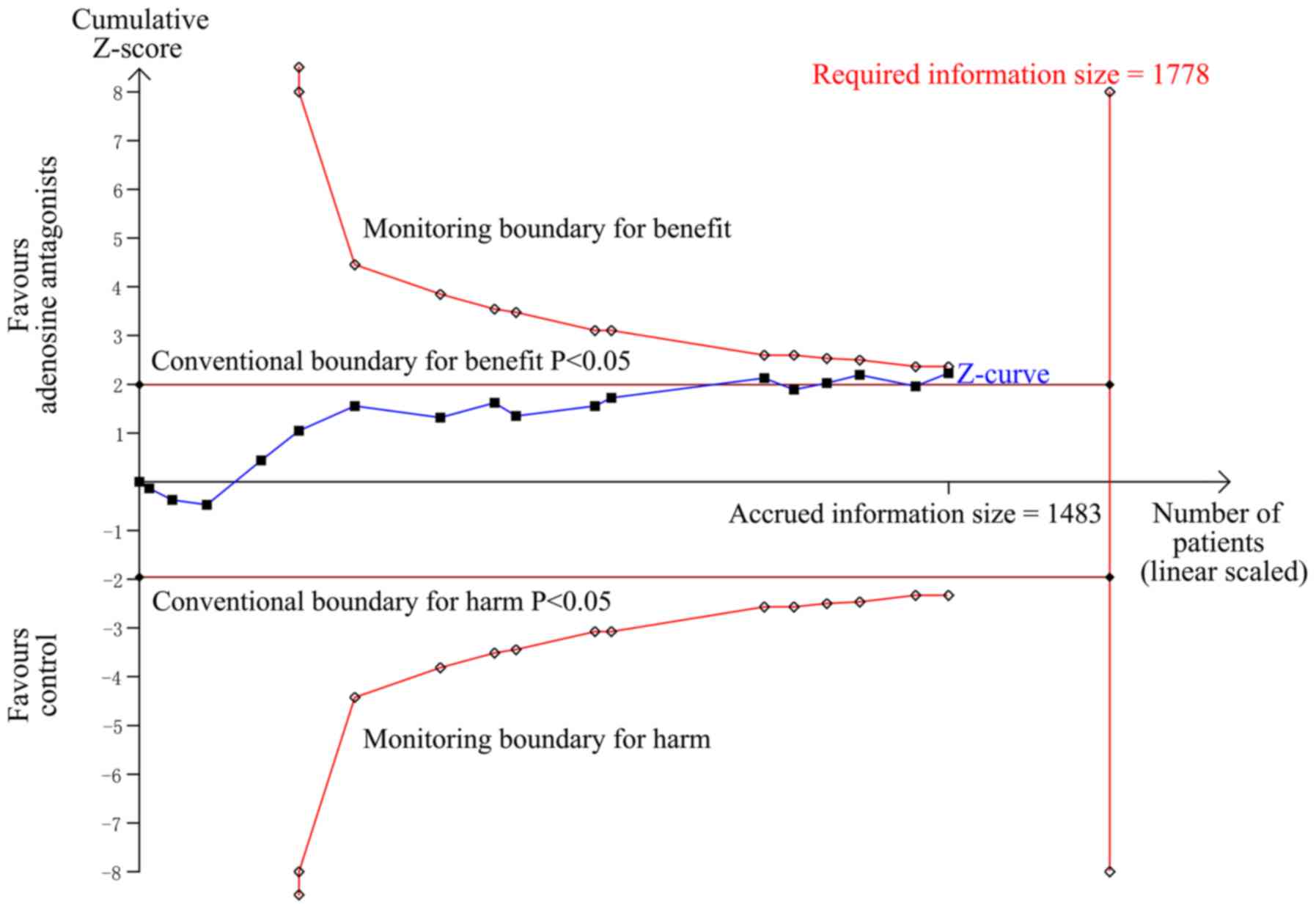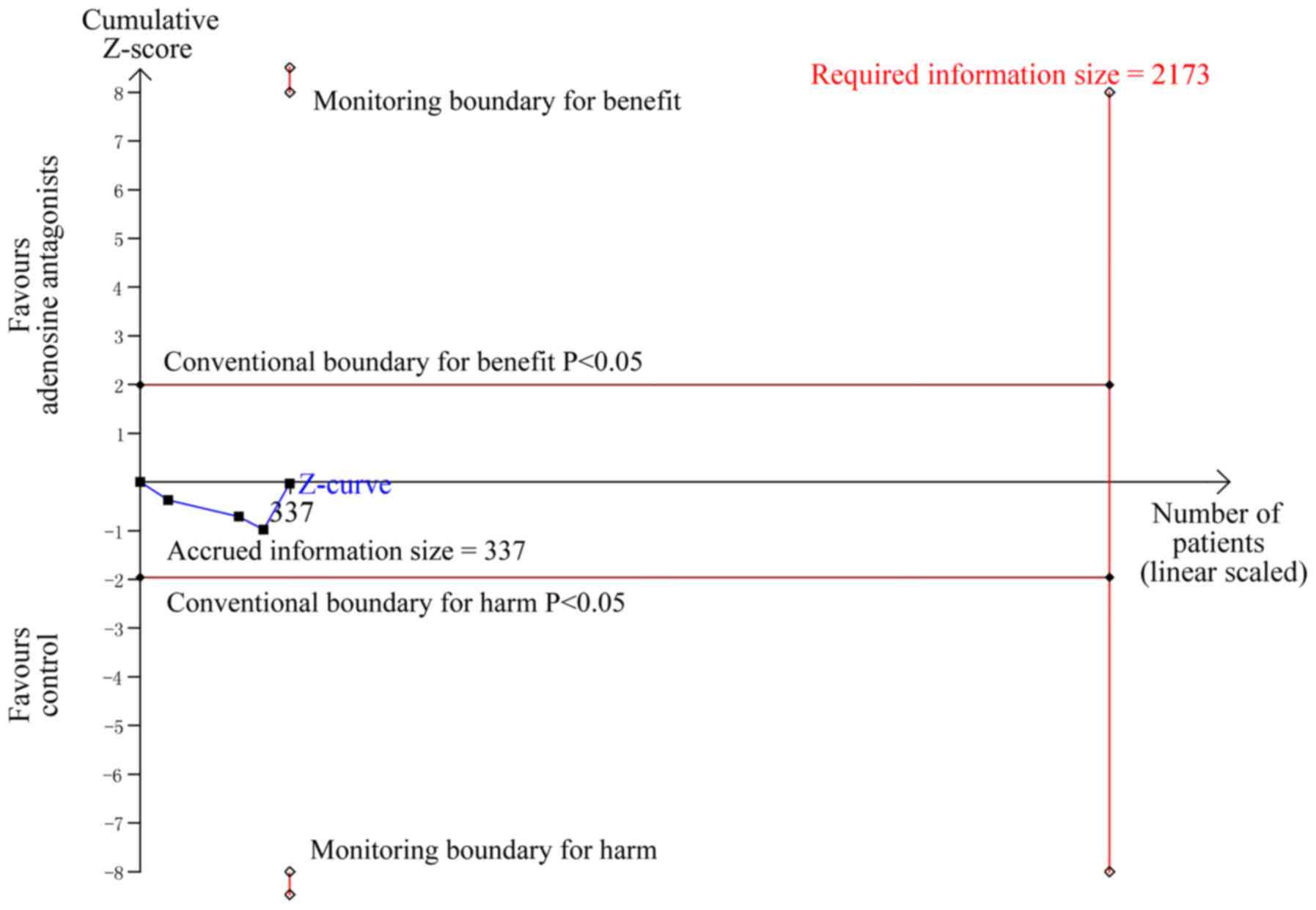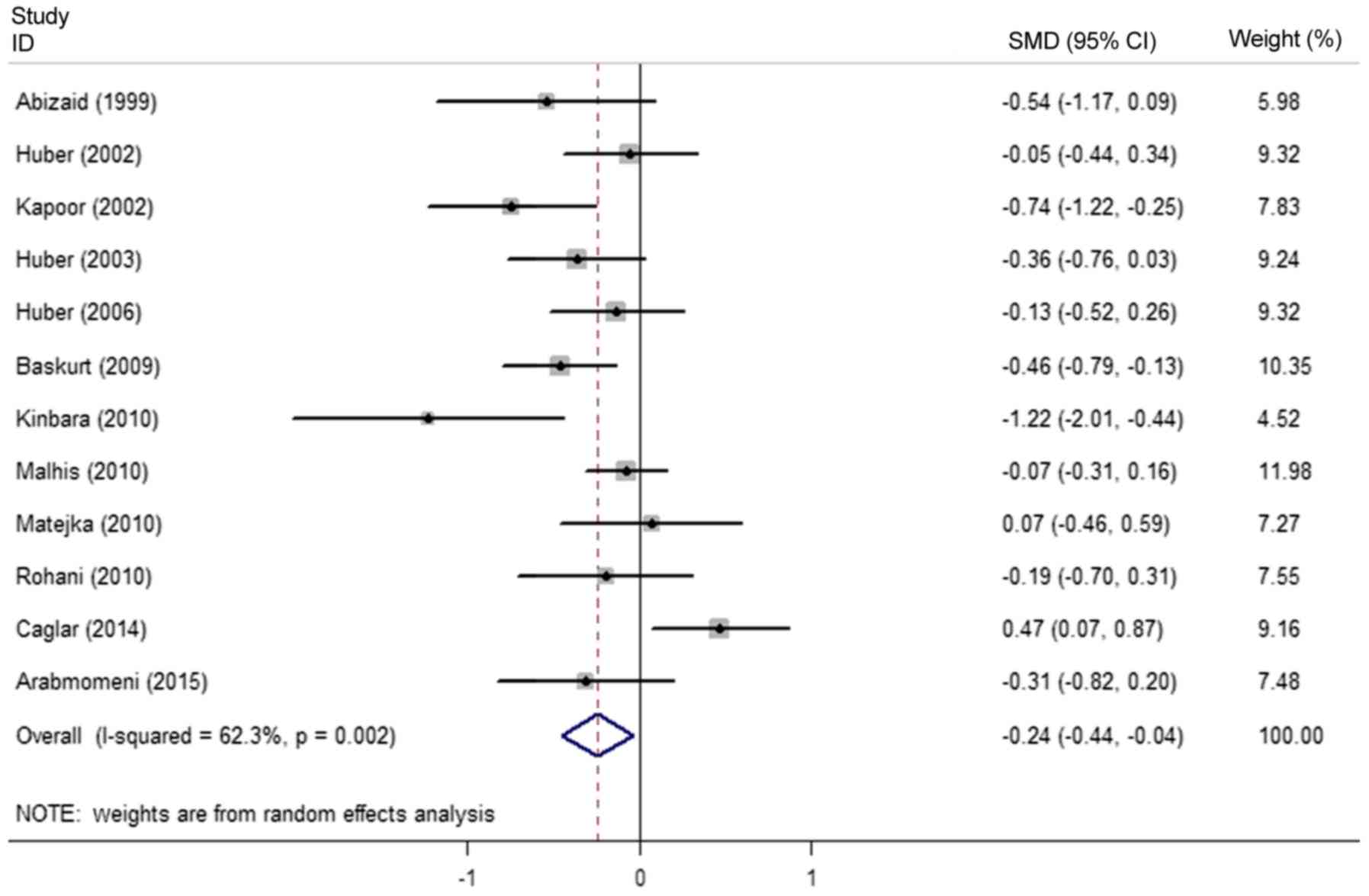|
1
|
Maliborski A, Zukowski P, Nowicki G and
Bogusławska R: Contrast-induced nephropathy-a review of current
literature and guidelines. Med Sci Monit. 17:RA199–RA204. 2011.
View Article : Google Scholar : PubMed/NCBI
|
|
2
|
McCullough PA: Contrast-induced acute
kidney injury. J Am Coll Cardiol. 51:1419–1428. 2008. View Article : Google Scholar : PubMed/NCBI
|
|
3
|
Mehran R, Aymong ED, Nikolsky E, Lasic Z,
Iakovou I, Fahy M, Mintz GS, Lansky AJ, Moses JW, Stone GW, et al:
A simple risk score for prediction of contrast-induced nephropathy
after percutaneous coronary intervention: Development and initial
validation. J Am Coll Cardiol. 44:1393–1399. 2004. View Article : Google Scholar : PubMed/NCBI
|
|
4
|
Kumar S, Nair RK, Aggarwal N, Abbot AK,
Muthukrishnan J and Kumar KV: Risk factors for contrast-induced
nephropathy after coronary angiography. Saudi J Kidney Dis Transpl.
28:318–324. 2017. View Article : Google Scholar : PubMed/NCBI
|
|
5
|
Valappil SP, Kunjukrishnapillai S, Iype M,
Koshy AG, Viswanathan S, Gupta PN, Velayudhan RV and Ali FM:
Predictors of contrast induced nephropathy and the applicability of
the Mehran risk score in high risk patients undergoing coronary
angioplasty-A study from a tertiary care center in South India.
Indian Heart J. 70:399–404. 2018. View Article : Google Scholar : PubMed/NCBI
|
|
6
|
Çinar T, Keskin M and Kaya A: Atrial
fibrillation: A new risk factor for contrast-induced nephropathy.
Angiology. Sep 27–2018.(Epub ahead of print).
|
|
7
|
Gruberg L, Mehran R, Dangas G, Mintz GS,
Waksman R, Kent KM, Pichard AD, Satler LF, Wu H and Leon MB: Acute
renal failure requiring dialysis after percutaneous coronary
interventions. Catheter Cardiovasc Interv. 52:409–416. 2001.
View Article : Google Scholar : PubMed/NCBI
|
|
8
|
Bashir AA, Kong V, Skinner D, Bruce J,
Laing G, Brysiewicz P and Clarke D: Contrast-induced nephropathy
following CT scan for trauma is not rare and is associated with
increased mortality in South African trauma patients. Eur J Trauma
Emerg Surg. Sep 18–2018.(Epub ahead of print). View Article : Google Scholar : PubMed/NCBI
|
|
9
|
Wyatt CM, Camargo M and Coca SG:
Prophylactic hydration to prevent contrast-induced nephropathy:
Much ado about nothing? Kidney Int. 92:4–6. 2017. View Article : Google Scholar : PubMed/NCBI
|
|
10
|
Ozkok S and Ozkok A: Contrast-induced
acute kidney injury: A review of practical points. World J Nephro.
6:86–99. 2017. View Article : Google Scholar
|
|
11
|
Trivedi HS, Moore H, Nasr S, Aggarwal K,
Agrawal A, Goel P and Hewett J: A randomized prospective trial to
assess the role of saline hydration on the development of contrast
nephrotoxicity. Nephron Clin Pract. 93:C29–C34. 2003. View Article : Google Scholar : PubMed/NCBI
|
|
12
|
Tepel M, Aspelin P and Lameire N:
Contrast-induced nephropathy: A clinical and evidence-based
approach. Circulation. 113:1799–1806. 2006. View Article : Google Scholar : PubMed/NCBI
|
|
13
|
Ix JH, McCulloch CE and Chertow GM:
Theophylline for the prevention of radiocontrast nephropathy: A
meta-analysis. Nephrol Dial Transplant. 19:2747–2753. 2004.
View Article : Google Scholar : PubMed/NCBI
|
|
14
|
Bagshaw SM and Ghali WA: Theophylline for
prevention of contrast-induced nephropathy: A systematic review and
meta-analysis. Arch Intern Med. 165:1087–1093. 2005. View Article : Google Scholar : PubMed/NCBI
|
|
15
|
Dai B, Liu Y, Fu L, Li Y, Zhang J and Mei
C: Effect of theophylline on prevention of contrast-induced acute
kidney injury: A meta-analysis of randomized controlled trials. Am
J Kidney Dis. 60:360–370. 2012. View Article : Google Scholar : PubMed/NCBI
|
|
16
|
Hu M, Cappeleri J and Lan KK: Applying the
law of the iterated logarithm to control type I error in cumulative
meta-analysis of binary outcomes. Clin Trials. 4:329–340. 2007.
View Article : Google Scholar : PubMed/NCBI
|
|
17
|
Borm GF and Donders AR: Updating
meta-analyses leads to larger type I errors than publication bias.
J Clin Epidemiol. 62:825–830.e10. 2009. View Article : Google Scholar : PubMed/NCBI
|
|
18
|
Brok J, Thorlund K, Gluud C and Wetterslev
J: Trial sequential analysis reveals insufficient information size
and potentially false positive results in many meta-analyses. J
Clin Epidemiol. 61:763–769. 2008. View Article : Google Scholar : PubMed/NCBI
|
|
19
|
Wetterslev J, Thorlund K, Brok J and Gluud
C: Estimating required information size by quantifying diversity in
a random-effects meta-analysis. BMC Med Res Methodol. 9:862009.
View Article : Google Scholar : PubMed/NCBI
|
|
20
|
Thorlund K, Devereaux PJ, Wetterslev J,
Guyatt G, Ioannidis JP, Thabane L, Gluud LL, Als-Nielsen B and
Gluud C: Can trial sequential monitoring boundaries reduce spurious
inferences from meta-analyses? Int J Epidemiol. 38:276–286. 2009.
View Article : Google Scholar : PubMed/NCBI
|
|
21
|
Wetterslev J, Thorlund K, Brok J and Gluud
C: Trial sequential analysis may establish when firm evidence is
reached in cumulative meta-analysis. J Clin Epidemiol. 61:64–75.
2008. View Article : Google Scholar : PubMed/NCBI
|
|
22
|
Jadad AR, Moore RA, Carroll D, Jenkinson
C, Reynolds DJ, Gavaghan DJ and McQuay HJ: Assessing the quality of
reports of randomized clinical trials: Is blinding necessary?
Control Clin Trials. 17:1–12. 1996. View Article : Google Scholar : PubMed/NCBI
|
|
23
|
Gandhi MR, Brown P, Romanowski CA, Morcos
SK, Campbell S, el Nahas AM and Gray TA: The use of theophylline,
an adenosine antagonist in the prevention of contrast media induced
nephrotoxicity. Br J Radiol. 65:8381992. View Article : Google Scholar : PubMed/NCBI
|
|
24
|
Abizaid AS, Clark CE, Mintz GS, Dosa S,
Popma JJ, Pichard AD, Satler LF, Harvey M, Kent KM and Leon MB:
Effects of dopamine and aminophylline on contrast-induced acute
renal failure after coronary angioplasty in patients with
preexisting renal insufficiency. Am J Cardiol. 83:260–263, A5.
1999. View Article : Google Scholar : PubMed/NCBI
|
|
25
|
Erley CM, Duda SH, Rehfuss D, Scholtes B,
Bock J, Müller C, Osswald H and Risler T: Prevention of
radiocontrast-media-induced nephropathy in patients with
pre-existing renal insufficiency by hydration in combination with
the adenosine antagonist theophylline. Nephrol Dial Transplant.
14:1146–1149. 1999. View Article : Google Scholar : PubMed/NCBI
|
|
26
|
Huber W, Ilgmann K, Page M, Hennig M,
Schweigart U, Jeschke B, Lutilsky L, Weiss W, Salmhofer H and
Classen M: Effect of theophylline on contrast material-nephropathy
in patients with chronic renal insufficiency: Controlled,
randomized, double-blinded study. Radiology. 223:772–779. 2002.
View Article : Google Scholar : PubMed/NCBI
|
|
27
|
Kapoor A, Kumar S, Gulati S, Gambhir S,
Sethi RS and Sinha N: The role of theophylline in contrast-induced
nephropathy: A case-control study. Nephrol Dial Transplant.
17:1936–1941. 2002. View Article : Google Scholar : PubMed/NCBI
|
|
28
|
Huber W, Schipek C, Ilgmann K, Page M,
Hennig M, Wacker A, Schweigart U, Lutilsky L, Valina C, Seyfarth M,
et al: Effectiveness of theophylline prophylaxis of renal
impairment after coronary angiography in patients with chronic
renal insufficiency. Am J Cardiol. 91:1157–1162. 2003. View Article : Google Scholar : PubMed/NCBI
|
|
29
|
Dussol B, Morange S, Loundoun A, Auquier P
and Berland Y: A randomized trial of saline hydration to prevent
contrast nephropathy in chronic renal failure patients. Nephrol
Dial Transplant. 21:2120–2126. 2006. View Article : Google Scholar : PubMed/NCBI
|
|
30
|
Huber W, Eckel F, Hennig M, Rosenbrock H,
Wacker A, Saur D, Sennefelder A, Hennico R, Schenk C, Meining A, et
al: Prophylaxis of contrast material-induced nephropathy in
patients in intensive care: Acetylcysteine, theophylline, or both?
A randomized study. Radiology. 239:793–804. 2006. View Article : Google Scholar : PubMed/NCBI
|
|
31
|
Demir M, Kutlucan A, Akın H, Aydın O and
Sezer MT: Comparison of different agents on radiographic contrast
agent induced nephropathy. Eur J Gen Med. 5:222–227. 2008.
View Article : Google Scholar
|
|
32
|
Baskurt M, Okcun B, Abaci O, Dogan GM,
Kilickesmez K, Ozkan AA, Ersanli M and Gurmen T: N-acetylcysteine
versus N-acetylcysteine + theophylline for the prevention of
contrast nephropathy. Eur J Clin Invest. 39:793–799. 2009.
View Article : Google Scholar : PubMed/NCBI
|
|
33
|
Kinbara T, Hayano T, Ohtani N, Furutani Y,
Moritani K and Matsuzaki M: Efficacy of N-acetylcysteine and
aminophylline in preventing contrast-induced nephropathy. J
Cardiol. 55:174–179. 2010. View Article : Google Scholar : PubMed/NCBI
|
|
34
|
Malhis M, Al-Bitar S and Al-Deen Zaiat K:
The role of theophylline in prevention of radiocontrast
media-induced nephropathy. Saudi J Kidney Dis Transpl. 21:276–283.
2010.PubMed/NCBI
|
|
35
|
Matejka J, Varvarovsky I, Vojtisek P,
Herman A, Rozsival V, Borkova V and Kvasnicka J: Prevention of
contrast-induced acute kidney injury by theophylline in elderly
patients with chronic kidney disease. Heart Vessels. 25:536–542.
2010. View Article : Google Scholar : PubMed/NCBI
|
|
36
|
Rohani A: Effectiveness of aminophylline
prophylaxis of renal impairment after coronary angiography in
patients with chronic renal insufficiency. Indian J Nephrol.
20:80–83. 2010. View Article : Google Scholar : PubMed/NCBI
|
|
37
|
Bilasy ME, Oraby MA, Ismail HM and Maklady
FA: Effectiveness of theophylline in preventing contrast-induced
nephropathy after coronary angiographic procedures. J Interv
Cardiol. 25:404–410. 2012. View Article : Google Scholar : PubMed/NCBI
|
|
38
|
Caglar I, Caglar NT, Conkbayir C, Baskurt
M, Aktürk F, Dasli T and Okcun B: Contrast study: Comparision of
nephroprotective three protocols: Acetylcysteine-sodium
bicarbonate-theophylline, to prevent contrast-induced nephropathy.
Russ J Cardiol. 105:27–33. 2014. View Article : Google Scholar
|
|
39
|
Arabmomeni M, Najafian J, Abdar Esfahani
M, Samadi M and Mirbagher L: Comparison between theophylline,
N-acetylcysteine, and theophylline plus N-acetylcysteine for the
prevention of contrast-induced nephropathy. ARYA Atheroscler.
11:43–49. 2015.PubMed/NCBI
|
|
40
|
Sendeski M, Patzak A and Persson PB:
Constriction of the vasa recta, the vessels supplying the area at
risk for acute kidney injury, by four different iodinated contrast
media, evaluating ionic, nonionic, monomeric and dimeric agents.
Invest Radiol. 45:453–457. 2010. View Article : Google Scholar : PubMed/NCBI
|
|
41
|
Seeliger E, Lenhard DC and Persson PB:
Contrast media viscosity versus osmolality in kidney injury:
Lessons from animal studies. Biomed Res Int. 2014:3581362014.
View Article : Google Scholar : PubMed/NCBI
|
|
42
|
Arend LJ, Bakris GL, Burnett JC Jr,
Megerian C and Spielman WS: Role for intrarenal adenosine in the
renal hemodynamic response to contrast media. J Lab Clin Med.
110:406–411. 1987.PubMed/NCBI
|
|
43
|
Osswald H and Schnermann J:
Methylxanthines and the kidney. Handb Exp Pharmacol. 391–412. 2011.
View Article : Google Scholar : PubMed/NCBI
|
|
44
|
Weinberger M and Hendeles L: Therapeutic
effect and dosing strategies for theophylline in the treatment of
chronic asthma. J Allergy Clin Immunol. 78:762–768. 1986.
View Article : Google Scholar : PubMed/NCBI
|















